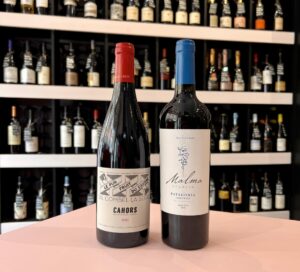
Are you a Malbec lover? If so, you’ll be happy to know that World Malbec Day is right around the corner on Monday 17th April. This special day commemorates the founding of Argentina’s first agronomy school in 1853, to study European soil and grapes, including the Malbec grape.
The Malbec grape is originally from France, specifically a natural cross of two varieties that grow in the southeast. Although it quickly became common as a blending grape, it never surfaced as a top French variety due to the grapes’ poor resistance to weather and pests and a tendency to suffer in Bordeaux’s changeable climate. Although Cahors in France now produces incredible Malbec (more on this later) it found a new home in Mendoza, Argentina, where a nostalgic French botanist planted it by order of the mayor in 1868.
Today, Argentina leads the production of the grape with over 75% of all the acres of Malbec production in the world. In a way, Argentina reinvigorated Malbec as one of the top 18 noble grapes. Now it grows in numerous countries and continues to gain popularity.
One of the reasons for its growing popularity is because of Malbec’s bold flavours and richness. Many wine tasters believe oak ageing is best, but most Argentine Malbecs only have about 6 – 12 months of oak ageing, which gives it a classic ‘blueberry’ smell.
Malbec wine is a deep purple-red that is nearly opaque, similar to Syrah and Mourvedre. However, Malbec wines will often have a bright magenta rim.
Although some people have strong opinions about whether French or Argentinian Malbec is the best – we think they’re both outstanding and each holds its own. If you’re looking for a good Malbec to try, we’ve picked out two really strong contenders, one from Argentina and one from France.

First up is the Malma Esencia Malbec from Argentina, priced at £10.40. This Argentinian Malbec is really fresh, ripe, and juicy with a lick of mintiness and a puff of oak smoke on the way down. You’ll smell red currant, cassis, blackcurrant, and plums with a little smokey finish. It’s an easy-drinking Malbec perfect for a weekend afternoon.
The second contender is the Château Combel-la-Serre Le Pur Fruit de Causse from France, priced at £16.00. Produced by Château Combel-la-Serre, this wine is suitable for vegans and it’s organic too. We carry the 2021 vintage which is widely regarded as the best year for this wine. Recognisably a Malbec, yet at just 12.5% alcohol, it’s a genuine easy-drinking red wine – you could even serve it slightly chilled in warmer summer months.
Most of France’s Malbec is found in Cahors, a small town on the switchback River Lot that gently flows towards Bordeaux. The Ilberts have been farming vines in Cahors since 1901 on the region’s famed limestone plateau.
Owners Julien and Sophie use a traditional short fermentation to obtain maximum fruit extraction. No oak is used, letting the pure fruit of these special grapes shine.
When it comes to pairing, unoaked Malbec doesn’t have a super long finish. Because of this, Malbec is great with leaner red meats and does extremely well with blue cheese. Malbec pairs especially well with dark meat, game and poultry, and lean red meat.
On the spice front, earthy or smoky flavours such as sumac, thyme, smoked paprika, cumin, coriander, juniper berry, vanilla bean and garlic work well.
For vegetarians, Malbec pairs beautifully with mushrooms, roasted vegetables, green and red bell peppers, rocket, kale, chard, grilled chicory, onion and beetroot.
Known for its plump, dark fruit flavours and smoky finish, Malbec wine offers a great alternative to higher-priced Cabernet Sauvignon and Syrah. Why not try a bottle of French and Argentinian Malbec and let us know what you think in the comments below?
